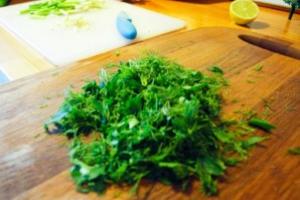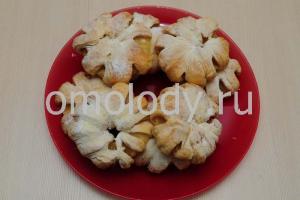Dracaena, or as it is also called “ false palm", grows in such a way that the trunk itself grows upward, and the side leaves, which are outlived their age, fall off and the tree becomes bald. To avoid this, you need to properly care for it and trim it regularly. But for this you need to know how to do it correctly. After all, a beautiful and lush palm tree looks much more attractive than a bald stick that will stand for no apparent reason.
Stores with ornamental plants They sell ready-made and formed Dracaena bushes. Most often, they were already pruned and about 2–3 shoots were left. Therefore, another question remains - can the plant be pruned in the future?
The Dracaena palm tree is unpretentious in its essence. How to trim leaves for branching so that it looks attractive? And before you do this, you need to know why you need to trim this palm tree.
- To make the palm tree look compact.
- To maintain a pleasant appearance of the palm tree.
- From the point of view of sanitary and hygienic standards.
There are cases when Dracaena grows to the ceiling and its stem part breaks off. Therefore, in order to avoid such cases, primary pruning is done. Also, most often Dracaena is bred indoors, and care should be taken to ensure that the trunk does not stretch too high. And when the palm tree reaches a size of 0.3 - 0.4 cm, the stem is cut at a certain height (this depends on the height of the room). This allows you to maintain the normal height of the plant and its attractiveness.
If the plant breaks, it is also pruned, but this will be discussed below.
Another reason to prune is when the palm tree has grown too much and its appearance no longer attracts attention. To do this you will need formative pruning. And also, if the plant is sick, then dry and rotten shoots are immediately removed, and the cut healthy parts are treated with an antiseptic. And even if, after the plant has lost its attractiveness, sanitary pruning allows you to save the life of the plant to produce side shoots.
When to prune
In order to know when to prune, you need to clarify why you need to shape the Dracaena crown. For example, sanitary pruning can be carried out at any time of the year and only when necessary. However, as already mentioned, this procedure is not carried out in order to make the appearance more pleasant. The important thing here is to keep the plant alive.
Decorative pruning of the crown should be carried out exclusively at a certain time. And this is done in the spring from May to April. This scheme assumes that the plant wakes up after winter sleep and actively begins to grow.
It should be remembered that pruning a tree for him is something reminiscent of a surgical operation. And the palm tree is experiencing very strong stress at this moment. Therefore, after pruning, Dracaena needs time to recover. It is also categorically not recommended to do decorative pruning during the summer heat. Because during this period the earth dries out and the tree is weakened, therefore more vulnerable to pests and diseases.
In order for decorative pruning to take place correctly, you must follow the following rules.
- The plant must be healthy and without the slightest sign of pests.
- Tools must be well sharpened and disinfected.
- After each cut, it must be treated with charcoal or activated carbon, ground to a powdery state.
- The palm tree needs to be treated with growth stimulants.
- The room temperature should not be higher than 25 o C.
- The humidity in the room should be within 75%.
Trimming technology
As already mentioned, to do sanitary pruning, it is enough to remove diseased shoots and leaves and treat the cuts with an antiseptic.

But in order to carry out decorative pruning at home, you need to follow the following scheme.
- And first you need to decide on the height. That is, you need to measure the place from where it will begin to branch.
- You need to take a sharp knife (the blade must be disinfected) and make an even cut in the marked place. In this case, under no circumstances should you break off the stem.
- Below the cutting level, all leaves must be removed.
- To avoid infection, the cut site must be treated with either paraffin or wax. Garden varnish is also suitable. This procedure prevents the trunk from drying out and prevents moisture evaporation.
- The remaining trunk is sprayed with water.
- The treated stump must be wrapped in sphagnum so that the cut remains open.
- The top of the trunk is wrapped in polyethylene so that the moss is always moist.
- For prevention purposes, you need to periodically remove the bag and check the buds, and as soon as at least one bud begins to grow, you need to remove the bag and remove all the moss.
In order for a palm tree to look attractive, it is necessary to trim it correctly and strictly fulfill all the conditions, otherwise, over time, all pruning will need to be done again.
Some examples of failure:
- excess or lack of moisture;
- incorrect room temperature;
- poor lighting.
If the trunk begins to rot at the cut site, then you will need to re-cut the rotten area and repeat the whole procedure again.
The cut top should not be thrown away. It can then be used for reproduction. Usually from it grow from one to several plants. And to do this, you need to again take a sharp and disinfected knife and cut the plant into cuttings. The resulting cuttings must be placed in water or moist soil. The upper sections are treated with paraffin. And when the cuttings are replete with a sufficient number of roots, and the first flowers begin to appear on the shoot itself, the plant is planted in pots.
There are cases when Dracaena has already been pruned. But the shoots became too long and ugly. Then the procedure is repeated again. That is, after a while, pruning is done, the top is cut into cuttings, etc.
Varieties of Dracaena
Except correct pruning, it is necessary to take into account the varieties of the Dracaena palm. Because different types require special conditions for trimming. Here are the most popular varieties that are found in homes or offices.
Dracaena fragrant is especially large species. Its leaves are curved and hang down to the sides. The plant reaches a height of up to 5 meters. Therefore, it is recommended to purchase it for rooms with high ceilings. But doing the pruning yourself is quite difficult. To do this you need to have at least some experience.

Dracaena reflexa is a small, recurved bush that has several trunks and grows straight from the roots. The leaves are usually elongated, recurved and with yellow stripes. This plant does not need pruning.
Dracaena surculosa grows to a medium size and has dark green leaves with spots. Shoots of this species constantly appear, so it needs to be constantly pruned and this process must be constantly monitored. But the process itself is very simple and the gardener does not need any special skills.
Dracaena derema is a very large palm tree with a woody trunk. The leaves of this plant are dark green - they are wide and long, which have yellow longitudinal stripes.
Dracaena goldena is very unusual plant, but it is very difficult to care for. The leaves of this palm are wide and almost round with transverse white-green lines.
How to care for a plant after pruning
Another important point in the formation of a Dracaena bush is proper care after pruning. As you know, Dracaena is tropical plant, and, therefore, during the rehabilitation course she needs to create a similar climate. To do this, the plant needs to be given a sufficient amount of light, periodic spraying and all the necessary irrigation measures.
It happens that during growth, several buds form on a palm tree and some die, and some may stop developing and stop growing.
Dracaena grows very slowly, but with proper care and proper pruning, a professional gardener can ensure that the tree grows from 1.5 to 2 meters. And sometimes it’s even higher.
One more important stage rehabilitations are frequent complex feeding. Stores have ready-made kits specifically for Dracaena.
But there is also folk way. To do this, 1 gram of urea is diluted with warm and settled water. This method will help speed up the growth process of side shoots.
You can also fertilize indoor plants with nitrogen-containing bait. But this method is better absorbed through the leaves. Also, during planting, you can add horn shavings or bone meal directly to the pot.
Pruning Dracaena is a very complex and time-consuming process that requires a lot of knowledge and effort from the gardener. Therefore, if you fail to trim the first time, then after some time you will have to do everything again. But not every palm tree is demanding of such conditions. There are some species that are not too demanding when it comes to pruning and novice gardeners can practice with them initially. But sanitary pruning should be done at any time and season of the year. If there is even the slightest chance of saving the tree, then it would be better to neglect appearance and concentrate on the health of the plant.
See more details here:
Dracaena grows at home for up to 15 years. Wherein evergreen grows at the top, and the lower part of the stem becomes bare. The leaves, having worked for a little over a year, gradually dry out, leaving a scar on the stem. How to prune dracaena to produce side shoots? The plant allows you to create new forms by shortening the shoots.
Types of dracaenas
Dracaena marginata
This type of dracaena is the most common. You've probably already seen this plant somewhere. The features of Dracaena Marginata are very characteristic. This is a palm tree with a completely bald trunk and a rosette of green leaves with a red edging at the top. Dracaena of this variety can grow to a height of two meters. Marginata does not require much light, so it grows well even in dark rooms.
Dracaena Sandera 
Dracaena Sandera is also called the bamboo of happiness. She really looks like this tree. But it is worth noting that this plant has no relationship with bamboo. This is the most natural dracaena, having a slightly unusual appearance.
The peculiarity of this variety is that the plant can develop well not only in the soil, but also in ordinary water. This gives free rein to your imagination. After all, such a plant makes the most beautiful compositions. You've probably already seen these in shopping centers or cafes.
Fragrant dracaena 
The fragrant dracaena is interesting; species of this variety are characterized by green and variegated leaves. They are attached to a thick trunk that is very unstable. Sometimes the plant even has to be propped up because of this.
When should you prune dracaena?
In some cases, when the plant has grown too much or if you want to get side shoots on dracaena, pruning is carried out. They also resort to cutting when the need arises, for example, when a stem breaks during a move, etc.
What time of year is it best to prune dracaena? The process should begin when the flower begins to actively grow after the winter period, i.e. at the beginning of spring. But, events can be held until the end of summer if there is a need. 
There is no exact answer to the question of whether it is possible to prune dracaena in winter. experienced flower growers It is advised to refrain from cutting operations in winter. This is explained by the fact that the plant will be subject to stress during the passive period of biological growth, which can cause negative consequences, including the death of the dracaena.
During the active period of biological growth, the plant produces phytohormones that influence growth processes, as a result of which the flower forms new leaf plates, the main stem grows and thickens, etc. In winter, when the dracaena is at rest, these processes are very slow; healing of wounds after pruning lasts a long period. It is better to wait until spring arrives and start pruning the flower.
How to prune dracaena correctly at home
It is recommended to trim a flower that is at least 30 centimeters tall. 5 centimeters retreat from the lower leaves and make a cut. 
Young plants are pruned randomly before reaching two years of age. Their trunk has not yet begun to become bare. Therefore, pruning is carried out for decorative look. At this point you should be sure that the dracaena is healthy. If you need to branch a flower well, then you will need some tips:
The top of the dracaena, which grows in a pot, is cut off with a sharp object.
The wound is not sprinkled with anything and is not cauterized.
Produce good watering plants, and cover the pot with film.
The covered pot is placed in a sunny place in the room.
Subsequent waterings are carried out in the tray without opening the pot to avoid changes in the temperature inside the bag.
The appearance of shoots is possible only at a temperature of 20-25 degrees and a humidity of 70-75%. Only in this case, new buds will appear in a month, a maximum of one and a half.
Try not to over-water the dracaena to prevent rotting of the root system and thereby cause the death of the flower.
Methods for trimming dracaena at home
Pruning a plant is an important procedure, and for some flowers it is simply a necessity. Its main task is to create new shoots so that the tree begins to branch, which contributes to good growth crowns How to form a crown, and why do you need sanitary pruning? There are several reasons to prune a plant, the main thing is to do it correctly: 
- Deformed shoots. In this case, sanitary pruning and crown formation are required. This type of pruning is used if the plant has grown too much and no longer looks attractive. After the procedure, new buds and shoots appear, and the appearance improves.
- If the dracaena has dried leaves or weak shoots, then they need to be removed so that the plant does not become completely sick. They need to be cut off completely, leaving only healthy areas.
Caring for dracaena after pruning at home
The removed parts of the dracaena do not have to be thrown away. The blanks can be sprouted in a glass with warm water or a container with sphagnum moss. Sprouts that have acquired their own roots are planted in a pot in which the mother stem lives, or a new flowerpot small size. Dracaena after decorative trimming hidden from direct ultraviolet radiation. An indoor flower is restored in semi-darkness at a temperature of +24–26 degrees. Until the cut site is healed, it is forbidden to add fertilizers to the water for irrigation. The exception is the growth stimulator.
The decorative bush, on which young shoots have formed, is returned to the southern windowsill. Sunlight stimulates bud growth. To ensure that the shoots develop evenly, the pot is periodically turned clockwise. Thanks to this, the sun will hit all parts of the bush. If the shoots are deformed due to incorrect light conditions, they are pruned next spring or summer so that straight specimens with dense foliage grow in place of ugly branches.
Propagation of dracaena by apical cuttings
It is advisable to cut the stalk with a sharpened knife. It is not recommended to use scissors or pruning shears, because the cut will be uneven and crumpled, and this can lead to rotting of the cutting. So, let's begin. 
It is necessary to cut off the top with the shoot, leaving a stump approximately 10 cm high.
If there are leaves on the stem of the cutting, then they must be removed, leaving only a few on the top.
If the cut stem is long, it is recommended to shorten it, leaving 15 cm from the crown.
Do not throw away the remaining piece, it will still be useful for cuttings.
It is necessary to dry the cut area for approximately 30 minutes.
Then you need to prepare a reservoir for the cutting. Pour into the container not cold clean water. It is worth throwing activated carbon into the liquid. You can also use Zircon and drop a few drops into the water, this will speed up the process of formation of the root system.
Place the cutting into the liquid. You need to monitor the water and change the water if necessary.
After about 2 months, the first roots will begin to appear, then it is necessary to plant the seedlings in a container. 
The water should be changed daily during the soaking period, which lasts three to five days. The water is gradually cooled throughout the day, which promotes successful germination.
It is necessary to choose a place for future seedlings.
For successful germination, the container should be placed in an area with full sunlight, preferably above +22 degrees. After removing the seeds from the water, you need to scatter planting material into soil with a lime base. Each seed should be placed directly below the soil surface. The soil consistency should have good drainage.
Regular soil moisture should be ensured throughout the entire germination period.
As a rule, shoots will appear in 30-40 days.
Grown palm trees can be moved to separate containers and cared for like an adult plant. It should be borne in mind that not all varieties of dracaena can be grown from seeds.
You will need
- - dracaena;
- - a sharp knife or pruning shears;
- - a piece of cotton wool;
- - a little alcohol;
- - charcoal;
- - sulfur;
- - the drug epin;
- - drug Kornevin;
- - moss;
- - plastic bag;
- - rubber;
- - pegs;
- - a jar of water.
Instructions
Sprinkle the cut with charcoal and move the plant to a shaded, warm place. Buds on trimmed dracaena are better if you cover the plant with a plastic bag or glass jar. Water dracaena, from which almost everything was cut, should be smaller than a normal plant. Dracaena tolerates a lack of moisture much better than its excess, which causes the plant to rot.
Sometimes, when rejuvenating, the top is cut off along with all the leaves. In this case, young shoots will actively germinate if you wrap the stump in a paper napkin or cloth moistened with warm water, and put a small plastic bag on top. With this method of new shoots, wet wipes should be changed every day.
New shoots will sprout on the pruned plant in about a month. If too many buds have sprouted, cut off some of the shoots. They can be rooted in water with the addition of charcoal. Move the dracaena to a more illuminated place, avoiding direct sun rays. Spray young shoots with settled water and wipe the leaves with a damp cloth.
Dracaena shoots growing from lateral buds usually go upward. If you want to form a more branched crown, insert a wooden or plastic ball wrapped in several layers of fabric between the young shoots.
If you need to form an even more branched crown, next spring trim the tops of young shoots in the same way.
Related article
Sources:
- Types of dracaenas and their cultivation
- buds of dracaena
Plants belonging to the palm family are quite demanding in terms of maintenance conditions and react painfully to damage to the trunk or root system. Unlike dracaena and yucca, the top of a palm tree that has grown tall cannot be cut off without destroying the plant. The only pruning that is possible for palm trees is to remove dead roots and leaves.

You will need
- - drainage;
- - sand;
- - turf land;
- - leaf soil;
- - humus soil;
- - Activated carbon;
- - garden var.
Instructions
When replanting or transshipping palm trees, which is carried out, you should clean off the soil from the sides of the earthen ball taken out of the pot or tub and inspect the root system. Carefully remove dead roots.
Young palms should be repotted once a year, increasing the size of the pot. Quite often it is discovered that in the very bottom part of the container, in which, a cushion of overgrown roots has formed. When transshipping, it is recommended to trim these roots with sharp scissors or a garden knife. Young plants do not suffer from such pruning.
Place with cut roots in a prepared container with fresh drainage and soil substrate. If you use clay shards as drainage, cover the drainage hole of the pot with one shard, and cover the remaining shards with a layer of river sand. On top of the sand, pour a soil mixture of three parts turf soil, two parts humus and leaf soil and part sand.
After transshipment, the plant needs to be watered room temperature. Palm trees with cut roots should not be fed over the next year, since fresh palms already have enough nutrients.
Dried palm leaves should not be plucked, but carefully cut off after the leaf petiole is completely dry. This can be done throughout the year. It is not recommended to prune plants that have dried out due to improper maintenance.
Add site to bookmarks
Indoor dracaena: pruning and care
Indoor dracaena flower, pruning of which is carried out under the condition active growth, is distinguished by its picturesqueness and beauty. Proper care behind the plant will allow it to grow and develop without being subject to diseases and pest attacks. It’s not difficult to learn how to trim a flower without harming it, but you need to follow a few rules.
Dracaena is a plant that is very often used to decorate hallways.
Details about the plant
Dracaena is recognized as one of the most fascinating indoor plants. The stems of young plants are not too branched. They are dotted with leaves, among which there are wide and lanceolate specimens. The color of the leaves can be green or with wide and narrow stripes of yellow, pink or white. As the trunk grows, it turns into a strong tree, gets rid of large quantity leaves and looks powerful. In some species, a bunch of leaves is formed in the upper part of the stem, which gives them an external resemblance to a palm tree. There are species whose leaves grow in a spiral. Dracaena roots are located compactly. They have a red-yellow color when cut and do not form shoots.
The growth of dracaenas takes a fairly long period, but they live a long time. This flower can produce panicles of light pink or white flowers with a pleasant scent. But, as a rule, they bloom extremely rarely indoors.

The dracaena flower has a pleasant smell and looks like a panicle with light pink or white flowers.
Among indoor gardeners Dracaena is in demand due to its unpretentiousness and extraordinary beauty. It is often used as an element that decorates and complements the interior. The plant looks amazing in flower arrangement. Dracaena will easily fit into large and small hallways, halls, hotel lobbies, shopping centers, offices.
The described plant is a fairly common indoor flower. It does not require careful care, easily tolerates moderate fluctuations in air temperature, and, compared to other flowers, tolerates watering, which can be done irregularly. Dracaena can feel good and grows not only in daylight, but also in electric lighting.
The plant is considered exotic, capable of bringing joy to the home at any time of the year. There are known facts that dracaena can humidify the air in the room and reduce the level of formaldehyde. If the owners take care of the pet, then its height easily reaches 3 m. The huge plant becomes not so attractive. To give it the required size and shape, you do not need to spend a lot of time and effort. Even an inexperienced gardener can cope with this simple procedure.
Return to contents
When are pruning operations performed?
The plant will feel comfortable and look healthy if it has reached a significant height. From the first months of spring until the end of August, dracaena is in the stage of active growth. This period is considered the optimal time for pruning.

Pruning the dracaena trunk stimulates the development of lateral buds, after which the branching process begins.
The pruning procedure for dracaena is not very pleasant during the cold season. In winter it is inactive, so experts do not recommend disturbing the flower. Even if all actions are carried out without deviations from the rules, there is a high probability of various problems arising, and, as a result, the dracaena may die.
In summer and spring, the plant produces hormones responsible for its growth. Thanks to this, rapid recovery of the trunk occurs. During the winter months, hormones are not produced, making the healing process much slower.
You can trim a flower during periods of slow growth only in emergency situations, for example, if it breaks. Damaged dracaena should be cut off immediately. If a broken dracaena, pruned in winter or autumn, is subjected to proper resuscitation care, it will quickly recover and will continue to delight its owners with its appearance.
Is it permissible to prune dracaena when it is in a weakened state or affected by some kind of disease? Absolutely not. Only a filled vital forces plant. The owner must take care to completely cure his plant. If you trim unhealthy dracaena, the cut area will gradually begin to dry out or rot. It will be extremely difficult to save a flower in such a situation.
Return to contents

Any part of the plant can act as a cutting: the top, the leaves themselves, and parts of the trunk.
The pruning procedure is necessary for all plants without exception. It perfectly performs the function of stimulating the kidneys, due to which new branches appear. However, not all lovers of indoor plants consider it necessary to prune it. What determines the importance of the procedure under consideration? The plant often produces deformed shoots. To ensure a beautiful appearance that will delight others and decorate the room, sanitary-formative pruning is performed. Instead of shoots with external defects, dracaena puts out new shoots.
It should be borne in mind that an overgrown indoor plant does not look decorative or elegant. After the pruning procedure, the flower will again look well-groomed and healthy.
Sanitary pruning is carried out if the dracaena is affected. Those areas of the plant that are infested with various pests or organisms must be removed without delay. The faster the operation is performed, the less likely it is that the disease will spread to healthy areas of the flower.
To do this, you need to prepare a knife whose blade is well sharpened. The height of the section of the stem subject to pruning can be chosen at your own discretion. The most suitable height is considered to be 15-20 cm from the upper end. Use a sharp knife to cut the stem.

Treatment with activated carbon avoids rotting of the cut area.
Part of the cut trunk should not be thrown away. This piece is suitable for propagating the plant by cuttings. The trunk should be dried for 2 or 3 days. As soon as the edge is tightened, it must be placed in a vessel with water or stuck into moist soil. There it should remain until rooting.
Dracaena, which has taken root, needs to be transplanted into a vessel for constant growth. Drainage is placed at the bottom of the container with the flower. We must not forget that the vessel with dracaena must have a special hole at the bottom.
The cut area should not rot. This can be avoided by treating the damaged area with activated carbon or paraffin. Activated carbon tablets should first be crushed into powder. Melt paraffin in a water bath. When performing processing, you need to be extremely careful so that the paraffin does not harm the delicate leaves.
Pruning should be done again if the stem in the damaged area begins to rot, and other measures do not help.
Trimmed dracaena loses moisture in a short time. Because of this, the formation of new kidneys is inhibited. To avoid this problem, experts recommend spraying water on the stem several times during the day. The water should be at room temperature.
For greater benefit and comfort, the plant should wrap the damaged area with slightly damp sphagnum moss. You need to put a colorless plastic bag on top of the flower so that the moisture leaves more slowly. Every 3-4 days (within 7 days) you need to lift the bag from the flower and find out what is happening with the shoot, moisten the moss. Such actions will allow the dracaena to form new shoots quickly enough.
Container with indoor plant must stand in the dark and must warm room. Optimal temperature indoor air - 27-28 °C, in no case lower than 25 °C. It is necessary to pay attention to eliminating drafts at the location of the pot.
New buds take quite a long time to form (over 30 days). When the first bud appears, the flower is able to take care of itself, so you can safely remove the sphagnum. Shoots on dracaena will begin to form in 60-90 days.
It is not for nothing that Dracaena is considered an exotic houseplant. It captivates with its appearance and attracts the attention of almost all amateur gardeners. To keep a flower beautiful and healthy, very little is required from a person, but the plant will decorate the room for many years.
Dracaena grows at home for up to 15 years. In this case, the evergreen plant grows at the top, and the lower part of the stem becomes bare. The leaves, having worked for a little over a year, gradually dry out, leaving a scar on the stem. How to prune dracaena to produce side shoots? The plant allows you to create new forms by shortening the shoots.

Principles of forming a dracaena bush
IN flower shop Dracaena is usually sold with ready-made branches. At the very beginning, when growing a young plant, a bush is formed from it in greenhouse conditions. It may consist of two or three branches. Is it possible to prune dracaena in the future? You can form each branch separately yourself, resulting in a picturesque palm tree. All operations are carried out only on a healthy plant.
Trimming time
The dracaena stem is a structure in which dormant buds are arranged in a spiral along its entire length. This is what makes it possible to obtain seedlings and the beginnings of new branches from a cut made in any part of the trunk.
Planned pruning of dracaena is done during the active growth period, when sap flow is best. There are times when the formation of a bush is needed urgently. For example, part of the stem broke off. Then the shortening must be carried out according to the rules, below the break point. Any pruning can only be effective on a healthy plant.
How to prune dracaena correctly at home

When shortening the central stem, you need to consider several points:
- top with green leaves should be in a zone of comfortable lighting, so the height of the trunk is calculated for the future growth of branches and leaves;
- for new shoots to appear, it will be necessary to provide the necessary conditions germination of new shoots from dormant buds;
- all operations to prepare the correct cut and seal it are carried out under sterile conditions.
You can use a plant for pruning that has 30 cm from the soil to the attachment point of the upper leaves.
Any part of the leafy or bare trunk is cut off. The removed area can be rooted by obtaining another copy of dracaena. Pruning dracaena for branching as an operation is carried out with a sharp knife without squeezing the tissue.
After the top part of the plant is cut off, it can be used to root the top, or cut into 7-10 cm pieces, each of which is capable of producing a new plant. The requirement to cut only with a sharp knife and even cuts is mandatory.
If the stem is leafy at the cut site, the leaves must be removed by 10-15 cm, exposing the trunk. Cover the cut area with garden pitch or melted paraffin so that the inner layer does not evaporate moisture or dry out. The rudiments of new branches should form on the cut. There can be from two to five. But not all germs will grow. The number of new formations depends on the conditions under which germination occurs.
The simultaneous development of all new shoots is achieved due to uniform lighting. Dracaena must be rotated during germination and subsequent care.
Conditions for germination:
- treating the stem with water with the addition of a growth stimulant, for example, Epin;
- creating a damp moss cushion around the open cut of the cambium, the waxed part should be open;
- a plastic bag is tightly secured on top, creating a constant humidity of 75% inside;
- The plant is kept in the light at a temperature of 22-25 degrees for a month.
It is important at this time not to open the cut site, not to remove the bag, and not to change the germination conditions. At the same time, the remaining leaves require watering, and the stem also needs to be moistened. Watering is carried out only by the bottom method, draining the remaining water that has not been absorbed into the earthen lump. It is important that germination is carried out in the light.
As soon as the plant produces buds at the cut site, it is ready to continue development without additional shelter.

It is not necessary that new branches will develop from all the buds that have hatched. Some will not have enough nutrition and will wither away. But you can prune the plant this way many times, renewing it and giving it a new shape.
If the plant has a bare stem, then it is completely placed in the bag after abundant watering. The bag is not removed until the seedlings appear, so as not to disturb the microclimate. The plant is watered through a tray.
When forming dracaena bordered, seedlings can go anywhere along the stem. Then the palm tree will become multi-tiered.
Is it necessary to prune dracaena at home?

The plant looks well-groomed if it is regularly pruned and shaped. Therefore, pruning is one of the mandatory operations for caring for dracaena. It happens that a plant develops deformed shoots, they should be removed. Then, instead of them, the plant will send out new shoots, more foliage is obtained, and the plant takes on new forms.
Any areas with pests and diseases should be removed immediately to prevent infection of the entire plant. This operation is called sanitary pruning.








